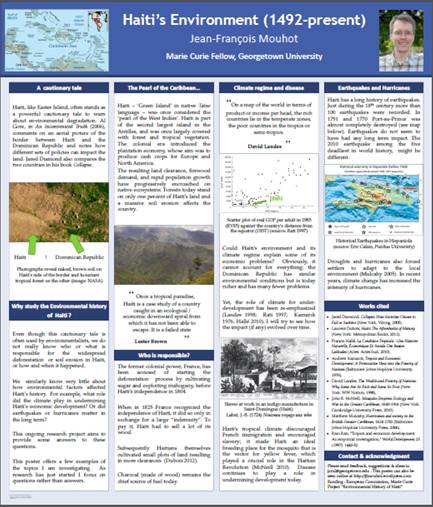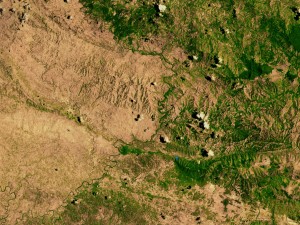Puisqu’on parle malheureusement beaucoup de pollution en ce moment, je re-publie cette recension du Livre de John McNeill Du Nouveau sous le soleil: Une histoire de l’environnement mondial au XXe siècle, que j’avais écrite il y a quelques années pour la Revue Internationale des Livres et des Idées. Le livre, que je recommande toujours aussi chaudement, est depuis paru en traduction française chez Champ Vallon et republié il y a peu en point poche.

En 1930, Robert Millikan, prix Nobel américain de physique, assurait encore qu’il n’y avait aucun risque que l’humanité détériore quelque chose d’aussi gigantesque que la Terre. Soixante-dix ans plus tard, J. R. McNeill soutient dans Something New Under the Sun que le XXe siècle apparaîtra exceptionnel aux générations futures non en raison des guerres mondiales, du nazisme ou du communisme, mais du fait des changements considérables que l’homme a fait subir à la planète. Jean-François Mouhot propose ici une présentation de ce classique de l’histoire de l’environnement.
On se souvient des remarques ironiques et des sourires narquois que soulevait invariablement, dans le film d’Alain Resnais, On connaît la chanson, l’énoncé du sujet de la thèse d’histoire de l’une des héroïnes : « Les Chevaliers Paysans de l’An Mil au Lac de Paladru ». Something New Under the Sun est tout à fait aux antipodes de cette tendance, réelle, de l’histoire à l’hyperspécialisation – qui fait parfois peser sur elle le soupçon de gratuité, d’inutilité.
Écologistes versus historiens
On y trouvera d’abord un vaste et ambitieux panorama de l’évolution de la planète et de ses habitants au cours du XXe siècle, une histoire à l’échelle du monde sur une longue période. Surtout, l’auteur cherche à éclairer et à approfondir les débats qui agitent la sphère publique, ou du moins la frange de la population intéressée par les questions écologiques. Mais qu’est-ce que l’histoire peut bien apporter à l’écologie politique, demandera-t-on peut-être ? Beaucoup d’écologistes sont, curieusement, peu intéressés par l’histoire. Et les historiens – à quelques exceptions près – leur rendent bien la monnaie de leur pièce, en ignorant souvent superbement l’environnement2. Les écologistes militants font pourtant très souvent référence au passé, à un passé où les gens, contrairement à aujourd’hui, n’avaient pas perdu le sens commun, où l’on ne mangeait pas n’importe quoi, où l’on ne cultivait pas la terre à coup d’engrais chimiques et autres insecticides polluants et cancérigènes, où l’on ne construisait pas de maisons en zones inondables, etc. Bref, un passé considérablement idéalisé et objet d’une affection particulière : ce n’est d’ailleurs pas un hasard si les premiers mouvements de « protection » ou de « conservation » de la nature sont nés à l’époque romantique, sous l’impulsion d’écrivains comme Wordsworth en Grande-Bretagne.
Pour de nombreux écologistes, l’évolution de nos sociétés correspond à une longue et incessante expansion de la société humaine, capitaliste, fondamentalement avide et destructrice, au détriment de la « nature », qui serait de plus en plus mal en point. Pour beaucoup, une catastrophe plus ou moins inévitable se prépare, et l’étude de l’histoire est un divertissement, quand il faut concentrer tous nos efforts sur l’avenir. Par contraste avec cette vision pessimiste de l’histoire, une grande partie de la population, en France et ailleurs dans le monde, refuse d’admettre qu’il puisse y avoir un danger à continuer de vivre comme nous le faisons actuellement et croit fermement que la science résoudra les problèmes à venir.
L’intérêt du livre de McNeill est qu’il permet de dépasser ces deux visions caricaturales, et amorce ainsi un dialogue nécessaire entre différents groupes souvent antagonistes. Ce dialogue est essentiel si l’on est – comme je le suis – convaincu à la fois de la gravité des problèmes environnementaux auxquels nous devrons faire face au cours des prochaines décennies, et du fait que l’union de tous les efforts est plus productive que la distribution de jugements et de blâmes (car il est des choses justes dans les deux camps).
Something New Under the Sun est organisé en deux parties principales. La première, intitulée « la musique des « sphères » », décrit les transformations apportées par l’homme au cours du XXe siècle aux quatre éléments qui rendent la vie possible : le feu (soit une histoire des énergies et de leurs utilisations) ; la terre (une chronique des transformations de la lithosphère et la pédosphère, du sol et des couches externes de la croûte terrestre) ; l’eau (l’hydrosphère) et l’air (l’atmosphère). McNeill ajoute à ces quatre éléments l’étude d’une dernière « sphère », la biosphère, soit l’ensemble des milieux dans lesquels la vie existe, à l’intersection des quatre « sphères » étudiées précédemment. La deuxième partie, intitulée « moteurs de changement », examine tour à tour les questions de population et de migrations, puis les problèmes économiques et politiques liés aux questions d’environnement. Si ces titres peuvent paraître excessivement théoriques et abstraits, le livre lui-même est toujours concret, éclairé de nombreux exemples et plein d’humour.
L’ouvrage a pour ambition, tout d’abord, de faire prendre conscience au lecteur des changements que l’homme a fait subir à son environnement au cours du XXe siècle. L’auteur soutient en effet que le XXe siècle apparaîtra exceptionnel aux générations futures non comme le siècle des guerres mondiales, du nazisme ou du communisme, mais plutôt en raison des changements considérables que l’homme a fait subir à la planète. Ces changements représentent un colossal re-façonnement, d’une intensité sans précédent. Au cours du siècle passé, nous avons eu une « empreinte écologique » sur la planète plus profonde que celle de l’ensemble des générations passées. Par exemple, selon les estimations de l’auteur, nous avons utilisé au cours du siècle dix fois plus d’énergie que tousnos ancêtres réunis dans les mille ans qui ont précédé 1900.
Bien sûr, ces changements, liés à l’accroissement de la population et des activités industrielles, trouvent leurs racines aux XVIIIe et XIXe siècles. Mais l’originalité de McNeill est de nous faire prendre conscience du changement d’échelle dans les transformations survenues au XXe siècle. Et l’on en vient alors à se demander si changer l’échelle d’un phénomène n’est pas en changer la nature même. Au cours du XXe siècle, « la population a quadruplé, l’économie mondiale a été multipliée par 14, l’utilisation énergétique par 16 et la production industrielle par un facteur de 40 ». McNeill arrive ainsi à quatre conclusions importantes, qu’il énonce comme suit : « Premièrement, le XXe siècle est exceptionnel pour l’intensité de ses changements et le rôle central qu’y a joué l’humanité. Deuxièmement, cette particularité écologique est la conséquence inattendue de préférences et de modèles d’ordre social, économique et intellectuel. Troisièmement, nos modes de pensée, nos comportements, la production et la consommation sont adaptés aux circonstances présentes – c’est-à-dire aux conditions climatiques (et bio/géochimiques globales) actuelles, à l’abondance typique du XXe siècle, où l’énergie était à bas prix et l’eau douce bon marché, où la population a connu une croissance rapide et l’économie plus encore. Quatrièmement, il serait difficile de changer ces préférences et ces modèles si les circonstances venaient à changer. Dans la mesure où ce dernier point se rapporte au futur et où cet ouvrage traite de l’histoire, je n’en explorerai pas les ramifications en profondeur. En développant ces thèmes, j’ai aussi à dessein de convaincre le lecteur que l’histoire moderne de l’écologie de la planète et l’histoire socioéconomique de l’humanité n’ont leur sens véritable qu’une fois prises ensemble3. »
Le rat et le requin
À la manière de La Fontaine, McNeill remarque que les espèces animales adoptent pour se perpétuer deux stratégies différentes, symbolisées par deux animaux : le rat et le requin. Le rat est le roi de l’adaptation : il est flexible, sait changer d’environnement, de régime alimentaire. Ceci lui a assuré, au cours des siècles, un succès considérable et, comme l’homme, une présence aux quatre coins de la planète. Le requin adopte une stratégie contraire : il s’adapte peu mais est parfaitement en adéquation avec un milieu spécifique qui lui garantit un succès remarquable tant que l’océan abonde en nourriture adaptée à son alimentation. Nos civilisations occidentales modernes, dont les modes de fonctionnement et les économies reposent sur les énergies fossiles, ont adopté massivement la stratégie du requin en devenant hyperspécialisées.
Cette hyperspécialisation n’est ni stupide ni nécessairement mauvaise en soi : tant que cela fonctionne, les hommes vivent, au moins théoriquement, mieux que lorsqu’ils ne se spécialisent pas. Pour prendre un exemple bien connu des économistes, l’Angleterre s’est modernisée en grande partie sur le principe de l’avantage comparatif, démontré par l’économiste David Ricardo au début du XIXe siècle. En se spécialisant dans la production et le commerce de produits, par exemple textiles, qu’elle pouvait fabriquer pour un coût relativement bas par rapport aux prix du marché mondial, l’Angleterre parvenait, grâce aux revenus de ces produits, à acheter des céréales, par exemple, qu’elle-même produisait à des prix comparativement bien plus élevés que d’autres pays. Grâce à ce principe, la Grande-Bretagne pouvait obtenir plus de grain que si elle avait tenté de maintenir une agriculture non compétitive sur le marché mondial. Dans ce système, le partenaire commercial était également gagnant, au moins en théorie. Ce procédé a notamment permis à l’Angleterre de réduire considérablement la malnutrition endémique de ses populations pauvres au cours du XIXe siècle. Le principe de l’avantage comparatif explique ainsi pourquoi des pays se spécialisent souvent dans des productions particulières. Celles-ci leur permettent d’avoir des revenus supérieurs à une agriculture de subsistance, mais elles sont plus fragiles en cas de crise. Ces spécialisations ont souvent également de graves conséquences environnementales. Il est important de rappeler ce point car nombre de ceux qui sont choqués par le transport de marchandises d’un bout à l’autre du monde ignorent l’origine de ce phénomène et ses aspects bénéfiques – du moins initialement. La question de savoir si les aspects négatifs sont aujourd’hui plus importants que les aspects positifs dépend de la perspective adoptée, à court ou à long terme. L’un des problèmes posés par ce système, comme l’Angleterre en a fait l’expérience au cours des deux guerres mondiales, est qu’il crée des dépendances dangereuses en cas de blocus. Il exige également des coûts de transports peu élevés, ce qui suppose une énergie bon marché. Or, de nombreux experts prédisent que l’énergie va progressivement devenir de plus en plus chère, au fur et à mesure que le pétrole et le gaz naturel atteindront leurs pics de production. Par ailleurs, l’empreinte écologique et le bilan carbone du transport international des marchandises, qui n’étaient pas comptabilisés dans le système de Ricardo, ne pourront plus être ignorés encore très longtemps. Il est donc maintenant urgent de repenser ce système à l’aune de ces nouvelles données.
Pour McNeill, les États-Unis sont l’exemple même d’un « requin écologique», hyper adapté à un milieu bien spécifique (même si la société américaine est aussi, par certains aspects, incroyablement flexible). Ce requin écologique a besoin pour survivre d’un certain nombre de paramètres, en l’absence desquels il court de grands risques. Le pétrole bon marché est l’un des éléments essentiels à la société américaine, de sorte que la guerre du Golfe de 1991 apparaît comme l’une des conséquences de cette dépendance (le livre a été publié avant l’invasion de l’Irak en 2003). Si cette stratégie du requin adoptée par les États-Unis et la quasi-totalité des pays modernes, a permis une amélioration générale du mode de vie, elle est porteuse de grands risques pour l’avenir, non pas pour l’espèce humaine à proprement parler, mais pour les sociétés dans lesquelles nous vivons.
Le livre débute par un examen synthétique de trois aspects évoqués dans l’avant-propos, qui servent à démontrer la spécificité du XXe siècle : la croissance spectaculaire de la population, du produit national brut mondial 5 et de l’utilisation de l’énergie. Trois domaines dont le décollage ne date certes pas du siècle dernier, mais dont l’auteur démontre l’accélération extraordinaire et l’interconnexion.
McNeill passe ensuite à l’étude des différentes « sphères » mentionnées plus haut. À propos de la lithosphère, il évoque un phénomène trop peu étudié par les historiens, celui de l’invention des premiers engrais artificiels, notamment azotés6. La découverte, en 1909, du processus de synthèse de l’ammonium par le chimiste allemand Fritz Haber permit une véritable révolution agricole en Allemagne, pays qui dépendait alors de l’importation de guano sud-américain pour enrichir ses terres arables et nourrir une population en rapide expansion. Les gains de productivité par hectare permis par ces nouveaux engrais furent proprement extraordinaires. Mais ces engrais ont l’inconvénient d’être très énergétivores, ce qui, combiné au fait que le procédé utilise du gaz naturel comme matière première, rend ces procédés étroitement dépendants des énergies fossiles et de leur coût. Or, les quelque 6,8 milliards d’êtres humains sur terre aujourd’hui dépendent presque tous (sauf ceux qui consomment exclusivement des produits biologiques) directement de ce procédé pour leur nourriture quotidienne. Ce rappel n’est pas inutile pour comprendre un peu mieux pourquoi les problèmes entraînés par l’utilisation de ces engrais et des nombreux pesticides synthétiques inventés au cours du siècle (pollution des sols et de l’eau, appauvrissement en micronutriments) n’ont guère freiné les hommes dans l’usage qu’ils en faisaient, eux qui remerciaient Fritz Haber d’avoir fabriqué « du pain avec de l’air ».
Mais les modifications apportées par l’homme au sol ne s’arrêtent pas là : McNeill montre que les hommes n’ont jamais autant déplacé de terre, de cailloux, de rochers et de minerais de toutes sortes qu’au cours du XXe siècle. L’humanité est maintenant une véritable force géologique, déplaçant collectivement considérablement plus de matière que les tremblements de terre, l’érosion et les volcans réunis. L’une des raisons de cette agitation est liée à la recherche et à l’extraction de minerais, ce qui a aussi des conséquences sociales importantes. McNeill évoque un exemple qui intéressera particulièrement le lecteur français : celui de l’exploitation du nickel en Nouvelle-Calédonie et du tort fait aux Kanaks. L’ouvrage attire également l’attention du lecteur sur l’une de ces tragédies qui font rarement l’objet de l’attention des médias (car il s’agit le plus souvent d’un non-événement, au sens où il se produit lentement) : l’érosion des sols. Dans ce domaine, les migrations européennes ont très souvent joué un rôle néfaste, en propageant des méthodes de cultures issues de pays dans lesquels l’érosion était rarement un problème, en raison de surfaces le plus souvent planes et de précipitations peu abondantes (car diluées dans le temps et l’espace).
Les deux chapitres sur l’atmosphère consistent principalement en une histoire de la pollution au cours du siècle. Dans ce domaine également les choses étaient loin d’être parfaites avant l’industrialisation. En effet, l’air était considérablement plus pollué avant cette période à l’intérieur des habitations (mal ventilées, insalubres et enfumées), ce qui engendrait des problèmes sanitaires considérables.
Si les forges de l’Empire romain avaient déjà envoyé des polluants jusque dans les glaces du Groenland, leur concentration était restée limitée, et c’est la révolution industrielle et la combustion massive d’énergies fossiles qui marque véritablement le début de la pollution de l’air à l’échelle mondiale. McNeill décrit avec un certain humour (noir) les effets du « smog » (mot composé de smoke, fumée et fog, brouillard) ; avant la seconde guerre mondiale, à Londres, le smog était parfois tellement épais qu’il arrivait à des piétons incapables de reconnaître leur chemin de basculer par-dessus les parapets des ponts. Dans les années 1950, à Londres toujours, un épisode persistant de smog tua entre 4 000 et 12 000 personnes, victimes de complications respiratoires. Mais ce phénomène n’était évidemment pas limité à la capitale britannique. La pollution atmosphérique tue aujourd’hui encore 400 000 à 800 000 personnes par an. D’une manière générale, en extrapolant à partir de diverses estimations de l’OMS ou de la Banque mondiale, McNeill estime le nombre de victimes de la pollution atmosphérique au cours du siècle à une fourchette comprise entre 25 et 40 millions, soit approximativement le même nombre de morts que le total des victimes des deux guerres mondiales. Là encore, les problèmes ont d’abord empiré avant de s’atténuer au cours du siècle, du moins pour le monde occidental. Ainsi, dès les années 1950, mais surtout à partir des années 1970, en Grande-Bretagne et aux États-Unis, diverses législations (les « Clean Air Acts ») ont permis aux villes de se débarrasser de ce fléau (en Asie, en revanche, et en particulier en Chine, comme à Beijing, en raison de l’industrialisation galopante, la situation est maintenant bien pire8). On pourrait se demander pourquoi les réformes ont mis autant de temps à se mettre en place. Là encore, il faut faire un effort de contextualisation. Tout d’abord, avant le recours massif au pétrole et au gaz naturel, énergies beaucoup plus « propres » que la houille, mais initialement beaucoup plus coûteuses, il existait peu d’alternatives au charbon pour le chauffage des habitations dans les agglomérations. La transition de l’une à l’autre des énergies correspond précisément au vote des Clean Air Acts. Par ailleurs, au cours du XIXe siècle, et encore bien après la seconde guerre mondiale, l’industrie était synonyme de richesse. Ses effets environnementaux étaient jugés bien négligeables par la majorité de l’opinion publique en comparaison des avantages qu’elle procurait. Était-ce là le simple effet de la propagande des bourgeois, propriétaires des usines ? Pas seulement : Stephen Mosley, dans un livre sur la pollution industrielle à Manchester, rappelle à quel point les idées fausses concernant la transmission des maladies au XIXe siècle contribuaient à faire apparaître positives les émanations de fumées. Les médecins étaient en effet persuadés que le choléra, et nombre d’autres maladies, se transmettaient par les mauvaises odeurs. La fumée des usines fut donc perçue pendant très longtemps comme une sorte de « désinfectant » de l’air qui permettait d’éviter la propagation de maladies9.
Les rejets de polluants dans l’atmosphère sont examinés en détail par McNeill dans ces deux chapitres, et illustrés de nombreux exemples frappants, comme l’histoire des pluies acides et des idées avancées pour remédier au problème. Mais l’exemple sans doute le plus fascinant est celui de l’invention et de l’utilisation des CFC (chlorofluorocarbures), dont l’histoire devrait inviter l’humanité à la prudence vis-à-vis des nouvelles technologies. Les CFC furent inventés dans les années 1920 par un scientifique américain du nom de Thomas Midgley. C’est également lui qui a eu l’idée « géniale » d’ajouter du plomb dans l’essence destinée aux moteurs à explosion, ce qui amène McNeill à conclure qu’aucun autre être vivant dans le monde n’a jamais eu un impact aussi important sur l’atmosphère que Midgley. Ces CFC semblèrent au début, comme de nombreux autres produits « modernes » similaires, dotés de toutes les vertus. Ils furent utilisés massivement par diverses industries pour toutes sortes d’usages, et notamment dans les aérosols et les réfrigérateurs. Ce n’est que très longtemps après le début de leur utilisation, et par hasard, qu’on se rendit compte de leur effet catastrophique : ils attaquaient la couche d’ozone. La chance, un « facteur » dont les historiens n’aiment guère reconnaître l’importance, joua d’ailleurs un rôle important dans cette affaire : ce n’est que du fait de la Grande Dépression de 1929 que l’utilisation en masse des CFC a été retardée de plus d’une décennie, évitant ainsi, de peu, une catastrophe écologique. Plusieurs leçons peuvent être tirées de cette histoire. Le succès du protocole de Montréal – accord international bannissant l’utilisation des CFC, signé en 1989 – sert à de nombreux optimistes à « prouver » que les nations peuvent être raisonnables et s’entendre quand un problème est bien identifié. Mais, à cette conclusion, on pourrait opposer que le changement climatique est précisément un problème maintenant bien identifié et faisant l’objet d’un large consensus scientifique, tout comme ses causes. Or, les États semblent éprouver beaucoup plus de difficultés à trouver un terrain d’entente que dans le cas de la couche d’ozone ! Les différences sont, de fait, majeures : il fut beaucoup plus facile de remplacer les CFC que de remplacer les énergies fossiles pour lesquelles on n’a pas (et l’on n’aura peut-être jamais) de produits de substitution. Par ailleurs, le problème de la couche d’ozone affectait avant tout les pays septentrionaux et riches (Alaska, Canada, pays scandinaves, Australie), tandis que les premiers effets du changement climatique touchent davantage, pour le moment, les pays à faible capacité d’adaptation, c’est-à-dire les pays pauvres, qui pèsent beaucoup moins lourd dans la géopolitique internationale. Mais rappeler, comme le fait McNeill, la candeur des scientifiques, convaincus de l’innocuité des CFC, et l’enthousiasme débridé qu’ils suscitèrent dans les années 1940, n’invite-t-il pas plutôt à une extrême prudence pour l’avenir ? À l’heure où la géo-ingénierie est présentée par certains scientifiques et dirigeants politiques comme l’unique solution au réchauffement de la planète, ou les OGM comme seul remède à la faim dans le monde, l’expérience des CFC devrait nous mettre en garde. Les technologies qui paraissent initialement miraculeuses peuvent avoir des conséquences catastrophiques. Par une ironie mordante de l’histoire, l’inventeur des CFC et de l’essence au plomb, Thomas Midgley, grabataire, est mort étranglé par le système de harnais un peu trop ingénieux qu’il avait conçu pour s’extraire de son lit. À sa mort, il était toujours convaincu que les CFC étaient l’une des inventions les plus bénéfiques à l’humanité.
Le changement climatique, autre conséquence de nos rejets de polluants atmosphériques, est traité plus rapidement. McNeill tend à minorer le problème, les données scientifiques étant moins claires à l’époque où le livre a été écrit qu’elles ne le sont maintenant. Par ailleurs, comme il le rappelle, même si le problème du réchauffement de la planète est en grande partie le résultat des consommations d’énergies fossiles (pétrole, gaz, charbon) au XXe siècle, le changement climatique n’aura pas eu de conséquences importantes au cours du siècle passé. Les choses semblent moins bien parties pour le XXIe siècle.
Les deux chapitres sur l’hydrosphère entraînent à nouveau le lecteur dans un tour du monde, du Gange aux grands lacs américains en passant par le Japon, et détaillent l’extraordinaire accroissement de l’utilisation de l’eau dans le monde : les prélèvements ont été multipliés par dix au cours du siècle. Ces ponctions ont permis d’énormes gains de productivité agricole, mais sont responsables de la salinisation de quantité de sols irrigués et sont insoutenables sur la longue durée. Le pompage des aquifères d’eau fossile ne durera pas éternellement car, d’une part, ces pompages sont très gourmands en énergie (et il faut 1000 tonnes d’eau pour faire pousser une tonne de blé !) et, d’autre, part les aquifères se remplissent infiniment plus lentement qu’on ne les pompe. En 1995, divers experts estimaient que le gigantesque aquifère Ogallala, la principale source d’eau utilisée dans le Middle West, notamment pour l’agriculture, serait pratiquement à sec en 2025.
Par ailleurs, les rejets industriels ont également entraîné la multiplication des pollutions aquatiques, localisées ou mondiales. Comme pour la pollution atmosphérique, tout ne va pas toujours plus mal : McNeill rappelle tout d’abord l’incroyable bond en avant, du point de vue de la santé publique, obtenu par la javellisation de l’eau. Par ailleurs, même si la pollution tend à se généraliser un peu partout, certains endroits spécifiques comme le Rhin ou la Méditerranée sont certainement moins pollués aujourd’hui qu’il y a une trentaine d’années. Les formes de pollution ont changé, les objets plastiques ayant souvent remplacé les nappes de pétrole dérivantes. Il faut rappeler une nouvelle fois ici, pour mieux comprendre et condamner moins rapidement, la naïveté des autorités sanitaires au début du XXe siècle, qui, à l’instar de la population dans son ensemble, ne pouvaient tout simplement pas imaginer que l’homme puisse un jour polluer un espace aussi vaste qu’un océan ou un grand lac. En 1930, l’année même où Midgley inventa les CFC, Robert Millikan, prix Nobel américain de physique, assurait qu’il n’y avait aucun risque que l’humanité puisse détériorer quelque chose d’aussi gigantesque que la terre !
Dans une seconde partie, McNeill s’intéresse aux nombreuses tentatives de domestication des cours d’eau. Il montre à quel point la construction des grands barrages – des Trois Gorges, sur le Yangtsé, ou Hoover, sur le Colorado – constituait essentiellement un ouvrage de propagande politique visant à asseoir le prestige de ceux qui en commandaient l’exécution. Leur impact écologique est, au mieux, mitigé, au pire, catastrophique. L’exemple du barrage d’Assouan est à cet égard frappant : en mettant fin aux célèbres crues annuelles, il a privé la vallée du Nil du limon qui rendait son sol auparavant si fertile. Une grande partie de l’électricité générée par le barrage sert ainsi aujourd’hui à produire des engrais chimiques utilisés en remplacement des alluvions jadis apportés par le fleuve. D’autres conséquences n’avaient pas été prévues : une partie importante des eaux du fleuve ne rejoignent plus la Méditerranée (car le lac de retenue, pour des raisons géopolitiques, a été construit dans une zone de forte évaporation). En conséquence, le delta du Nil, sur lequel vit près d’un tiers de la population égyptienne, est érodé par les flots, et la salinisation croissante de l’eau entraîne une importante migration d’espèces animales et végétales exogènes à la Méditerranée, dont il est pour l’instant difficile de mesurer les conséquences. Something New Under the Sun évoque également le développement de la culture du coton en Asie centrale. Les Soviétiques avaient anticipé le fait que l’irrigation massive nécessitée par cette culture entraînerait la quasi-disparition de la mer d’Aral, mais ils n’y voyaient pas de problème : le recul de la mer permettrait, pensaient-ils, d’accroître les surfaces agricoles. Ils n’avaient pas prévu la catastrophe écologique et sociale qui allait au contraire en découler : la mer, qui adoucissait localement le climat, ne joua plus son rôle modérateur, d’où de nombreuses gelées tardives réduisant la période annuelle de mise en culture des terres. Cela, associé à d’autres conséquences non prévues comme la diminution de l’hydrométrie de l’air ou les tempêtes de sable et de sel, a considérablement réduit les rendements agricoles dans la région et réduit à néant la pêche locale.
Le livre s’attache ensuite à la biosphère. McNeill y dresse un tableau passionnant, tout d’abord des progrès de la médecine moderne – qui ont permis à l’humanité, ou au moins aux plus riches, de gagner temporairement la bataille contre les virus et les bactéries, « premiers seigneurs de la biosphère » – et ensuite des transformations de l’agriculture, grâce auxquelles la population mondiale a pu croître de manière spectaculaire. Dans les deux cas, cependant, en dépit des progrès réalisés, inimaginables du temps de Malthus, le monde devient de plus en plus complexe et fragile à la fois, car nous sommes toujours plus dépendants de la technologie pour manger et éviter d’être mangés (par les micro-organismes qui nous entourent). Ceux qui craignent les risques ou les effets secondaires liés à l’administration de certains vaccins oublient souvent qu’il n’y a pas si longtemps, près d’un enfant sur deux mourait avant l’âge de cinq ans. L’augmentation prodigieuse de l’espérance de vie, – passée en France, par exemple, de 48 à 79 ans au cours du siècle – a aussi pour conséquence de rendre les maladies cardio-vasculaires ou les cancers beaucoup plus visibles dans la société, car ces maladies affectent plus souvent des personnes relativement âgées (la recrudescence de ces maladies n’est donc pas exclusivement liée à l’augmentation de la pollution ou au changement des modes de vie). La découverte de la pénicilline par Alexander Fleming en 1928 a permis de réduire considérablement les infections chez les soldats américains pendant la seconde guerre mondiale. Mais McNeill y voit surtout une parfaite illustration, hélas, de la « tragédie des biens communs10 ». Les premiers staphylocoques résistant aux nouveaux médicaments apparurent dès 1946. Pour éviter la multiplication de ces souches résistantes, Fleming était opposé à la vente libre d’antibiotiques, contribuant à leur utilisation inappropriée et abusive, tout comme à la pratique d’administrer des antibiotiques aux animaux d’élevage pour en augmenter la « productivité ». Mais la facilité, l’inertie et l’appât du gain parlèrent plus fort que lui. « Ces pratiques représentent une « tragédie des biens communs » microbienne. Cela convenait aux docteurs, aux patients et aux éleveurs d’utiliser des antibiotiques à tous crins, parce que ces antibiotiques étaient peu chers et faciles à utiliser, et parce que les bénéfices étaient rapides, réels et personnels. Les coûts à payer étaient futurs, ils étaient partagés par toute la société, et ils étaient inévitables. Même si un individu usait de retenue, son comportement ne pouvait au mieux que marginalement retarder l’échéance. » Les mêmes propos pourraient être tenus concernant une autre tragédie des biens communs : le changement climatique. Ils éclairent les difficultés à trouver une solution au problème. Nous pouvons individuellement limiter drastiquement nos émissions de dioxyde de carbone en diminuant nos déplacements en avion ou en voiture, le chauffage de nos maisons ou notre consommation de viande, mais cela demande beaucoup d’efforts et de sacrifices personnels sans résoudre le problème global du réchauffement planétaire. Ce conflit entre gain personnel à court terme et intérêt général à long terme a en tout cas conduit à une utilisation massive et abusive des antibiotiques depuis les années 1940, dont l’issue pourrait s’avérer douloureuse pour l’humanité (comme on le voit avec la réapparition d’infections nosocomiales impossibles à traiter) et signaler la fin de « l’âge d’or de la médecine ».
Le chapitre suivant illustre une autre fragilité de nos sociétés modernes à travers l’exemple de l’agriculture. Les principaux éléments qui ont permis les colossaux gains de productivité agricole au XXe siècle (à savoir les engrais chimiques, les pesticides, l’irrigation, l’utilisation massive de machines agricoles et la sélection de nouvelles plantes et espèces à forts rendements) sont tous étroitement dépendants d’une énergie bon marché, caractéristique du siècle passé, mais dont beaucoup d’analystes prédisent la fin prochaine. C’est le cas même pour le dernier élément de la liste, à la base de la « Révolution verte » – une politique fondée sur l’intensification de l’agriculture et l’utilisation de variétés à haut rendement. En effet, les recherches effectuées pour isoler de nouvelles variétés de blé, de maïs ou de riz, sélectionnées pour leurs gains de productivité ont été en grande partie financées par la fondation Rockefeller et, dans une moindre mesure, par la fondation Ford, deux organismes caritatifs fondés respectivement par le magnat du pétrole et celui de l’automobile.
La déforestation, la pêche et les invasions d’espèces nouvelles font l’objet du chapitre suivant. Dans l’ensemble, la forêt a cessé de reculer dans les pays de l’hémisphère nord au cours du siècle, la pression exercée sur elle s’étant largement relâchée : pour le chauffage domestique, le bois a été massivement remplacé par le mazout ou le gaz et, comme matériau de construction, les importations de bois tropical et l’utilisation de nouveaux matériaux (plastiques, etc.) ont également largement remplacé le bois des forêts tempérées. Ce qui ne veut pas dire que les forêts du nord sont en bonne santé. Les plus gros problèmes concernent les forêts tropicales, soumises à d’énormes pressions, et réserves d’une importante biodiversité. Les pêcheries fournissent à McNeill l’occasion d’évoquer un autre exemple de tragédie des biens communs, les individus et les États ayant intérêt à prélever un maximum de poissons dans un minimum de temps, les eaux internationales étant « ouvertes » à tout le monde et non sujettes à régulation. La surpêche conduit donc à l’effondrement régulier des prises de certaines espèces de poisson. Les stocks retrouvent rarement leurs niveaux antérieurs car, quand une espèce est pêchée à outrance, sa niche écologique peut être occupée par d’autres espèces qui ne sont pas nécessairement utiles à l’homme. McNeill s’arrête plus particulièrement sur l’histoire passionnante de la chasse à la baleine au cours du siècle. Les différentes espèces de ce mammifère, dont la graisse fournissait la matière première nécessaire à la margarine des pauvres et surtout à l’éclairage – avant les lampes à pétrole, puis les ampoules à incandescence – furent pratiquement chassées jusqu’à extinction par des générations de baleiniers employant des techniques toujours plus perfectionnées. Les cétacés furent sauvés parce qu’ils eurent la chance d’apparaître sympathiques aux groupes écologistes comme Greenpeace ou Les Amis de la Terre11, lesquels imposèrent une progressive régulation internationale. Mais, l’océan étant vaste et la répression peu sévère, les contrevenants restèrent très nombreux, d’Aristote Onassis (qui braconnait la baleine sans vergogne) aux baleiniers soviétiques, véritables usines flottantes de la taille de porte-avions. Ces navires, équipés de systèmes anti-détection, cachaient au reste du monde, dans leurs entrailles, leurs activités illégales.
La partie sur les espèces invasives pourrait être la plus comique du livre si les conséquences n’étaient pas bien réelles. Elle pourrait illustrer l’expression selon laquelle « le chemin de l’enfer est pavé de bonnes intentions ». L’importation de nouvelles espèces animales ou végétales est souvent le fait de colons ou d’immigrants ayant la nostalgie de leur pays natal, ou souhaitant améliorer un écosystème donné, mais ne mesurant aucunement les catastrophes qu’ils sont sur le point de provoquer. Il faut reconnaître, à leur décharge, que de très nombreuses plantes, de la canne à sucre au café, en passant par la tomate ou la pomme de terre ont été adaptées d’un continent à l’autre au cours des siècles passés, avec des conséquences essentiellement bénéfiques. On ne peut s’empêcher cependant de sourire lorsque McNeill raconte comment le lapin fut introduit en Australie et en Nouvelle-Zélande (d’où ils étaient auparavant absents) pour servir de gibier aux colons sans doute las de manger du kangourou. Les ravages, tant économiques qu’écologiques, causés par l’animal en Australie, furent considérables. Pour tenter de contenir l’invasion, la construction d’une immense barrière de plus de 3000 kilomètres fut entreprise entre 1901 et 1907, sans succès. Le virus de la myxomatose, introduit dans les années 1950 pour contenir la population, n’atteignit pas totalement ses objectifs, les lapins développant progressivement une résistance au virus.
L’impact de la population
La deuxième partie de l’ouvrage commence par une interrogation sur le rôle de l’accroissement de la population dans les dégradations environnementales mondiales. Encore une fois, les choses ne sont pas aussi simples qu’elles ne le paraissent au premier abord. McNeill compare tout d’abord les rythmes respectifs de croissance de la population et d’émissions de différents éléments comme le dioxyde de carbone, ou les rythmes d’érosion des sols au cours du XXe siècle. Ses constatations sont surprenantes : alors que la population mondiale a été multipliée par 3,5 au cours du siècle, les émissions de dioxyde de carbone, elles, ont été multipliées par 17, et celles de dioxyde de soufre, par 13. Même si McNeill reconnaît que ses calculs sont très rudimentaires, il estime tout de même que l’accroissement de la population ne semble pas le principal agent de dégradation environnementale. McNeill aurait pu utiliser l’exemple de la Chine pour illustrer ses propos : alors que la politique de l’enfant unique est en place depuis 1979 en Chine, et qu’elle a considérablement ralenti l’accroissement de la population du pays, les émissions de dioxyde de carbone se sont littéralement envolées, du fait du décollage économique, qui était précisément l’un des buts de la politique de l’enfant unique. Pendant cette période, la population chinoise est passée d’environ 1 milliard à 1,3 milliard d’individus, soit une augmentation d’un tiers, tandis que les émissions de dioxyde de carbone étaient, elles, multipliées par plus de 4, une augmentation 10 ou 12 fois plus rapide.
En fait, encore une fois, les problèmes posés par l’accroissement de la population dépendent des circonstances et des lieux : l’accroissement des populations urbaines a un impact écologique très important, différent de celui des populations rurales. En effet, dans certains cas, l’accroissement des populations rurales permet un meilleur entretien des structures prévenant l’érosion des sols ; la dépopulation de certains endroits peut avoir au contraire des effets catastrophiques d’un point de vue écologique, lorsque les digues, par exemple, ne sont plus entretenues.
Le chapitre X s’intéresse aux différents systèmes énergétiques, technologiques et économiques qui ont soutenu la croissance exponentielle à la fois de l’économie et des modifications environnementales au XXe siècle. Il décrit la succession de deux ou trois systèmes différents au cours du siècle, le premier basé sur le charbon, l’acier et le chemin de fer ; le second reposant sur le pétrole et l’automobile. (Quant au troisième, hypothétique, il pourrait reposer sur les ordinateurs et les OGM). Dans le premier système, les dégradations environnementales étaient assez localisées et limitées géographiquement. Il est toutefois intéressant de noter que la construction des chemins de fer aux États-Unis, nécessitant une quantité prodigieuse de bois pour les traverses, fit peser une menace suffisamment grave sur les forêts américaines pour que les présidents américains acceptent l’idée de la création de parcs nationaux (les premiers datent de la fin du XIXe siècle). Contrairement à ce que l’on pourrait croire, le chemin de fer ne fit pas disparaître les chevaux du paysage urbain ou rural : en fait, le XIXe siècle fut l’âge d’or du cheval, nécessaire au transport local des marchandises arrivées par train. Le nombre de chevaux augmenta considérablement à peu près partout, parallèlement à l’industrialisation, ce qui créa de nombreux problèmes de sécurité et de salubrité publique, en raison des déjections et des carcasses. On comprend mieux, dès lors, pourquoi la majorité de la population ne tarda pas à s’enthousiasmer pour les automobiles, plus propres et plus sûres : les voitures aujourd’hui sont quinze fois moins dangereuses par kilomètre parcouru que les chevaux (mais on parcourt de nos jours en moyenne bien sûr sans doute quinze ou cent fois plus de kilomètres en voiture que nos ancêtres n’en parcouraient à cheval !).
À partir des années 1920, le pétrole commença à supplanter le charbon comme principale source d’énergie primaire, d’abord aux États-Unis, et ensuite dans le monde. McNeill évoque avec talent l’impact du pétrole sur la vie quotidienne et les conséquences écologiques et sociales de l’utilisation de la voiture (le développement des banlieues est un exemple particulièrement frappant). Il enrichit son récit d’anecdotes qui aident à mieux mesurer l’impact de nouvelles inventions fonctionnant au pétrole, comme la tronçonneuse, sans laquelle la déforestation tropicale aurait été de bien moindre ampleur. McNeill discute ensuite de l’apparition de l’énergie nucléaire, et rappelle l’enthousiasme de nombreux scientifiques à l’époque, convaincus que l’électricité allait devenir si peu chère qu’on n’aurait même plus besoin de compteurs pour la mesurer ! Ce rappel n’est pas inutile, car il est souvent reproché aux écologistes d’avoir été trop pessimistes ou d’avoir annoncé des catastrophes qui ne se sont pas produites12. Il est plus rare de rappeler que les « optimistes » se trompent aussi souvent quand ils pensent que les nouvelles technologies vont réaliser des miracles. En fait, comme le rappelle McNeill, l’énergie nucléaire a toujours été largement subventionnée par les États, et les innombrables problèmes, fuites et accidents (Sellafield, Three Mile Island ou Tchernobyl) font que cette énergie n’a jamais compté pour plus de 5 % du total de l’énergie consommée dans le monde.
Le dernier chapitre du livre s’intéresse aux idées et à la politique au cours du siècle, et à leur impact sur l’environnement. Le nationalisme a joué un rôle environnemental important, d’abord en encourageant la natalité, comme en France après 1871, ou en Roumanie après 1965 (si McNeill on l’a vu, estime que l’accroissement de population ne joue peut-être pas le rôle principal qu’on veut souvent lui attribuer, il ne nie cependant pas l’importance du facteur démographique). Le patriotisme a également encouragé la protection de la nature, les forêts et les montagnes étant perçues comme des biens nationaux à protéger. Mussolini souhaitait également reboiser l’Italie, dans l’espoir de créer un climat plus frais qui aurait pu rendre les Italiens plus combatifs. L’impact du communisme soviétique ou chinois est également remarquable. McNeill l’assimile à une forme extrême de nationalisme, qui a entraîné lui aussi la colonisation et la mise en culture de terres « désertes » (Sibérie ou Tibet), ce qui a été souvent à l’origine d’importantes dégradations environnementales. Par ailleurs, le régime soviétique fut un ardent promoteur de gigantesques projets industriels qui eurent souvent pour conséquence des concentrations extrêmement élevées de pollution. Le militarisme de l’Union soviétique et des USA eut également des conséquences environnementales majeures (la préparation de la guerre ayant d’ailleurs joué un rôle plus important que les guerres elles-mêmes). D’une manière générale, les populations civiles ont accepté de subir des dégradations environnementales localisées et limitées, liées à la fabrication et aux essais d’armes nucléaires, par exemple, par peur d’être mal préparées en cas de conflit (la peur des conséquences d’une guerre nucléaire était beaucoup plus prégnante pendant la guerre froide que la peur des dégradations environnementales).
Finalement, pour McNeill, l’idée dominante du XXe siècle aura été la poursuite du paradigme de la croissance économique, partagée curieusement à la fois par les régimes communistes et capitalistes. Si la poursuite de l’enrichissement individuel et collectif a, selon lui, toujours été présente dans les sociétés mercantilistes comme l’Europe de l’Ouest, les États-Unis ou la Chine, c’est après la Grande Dépression, alors que la science économique était créditée d’avoir « sauvé » l’économie de la Grande-Bretagne et des États-Unis, que la poursuite de la croissance économique devint presque une nouvelle religion. Or, les économistes commirent alors l’erreur de faire abstraction de la nature dans leurs calculs économiques.
La colonisation et la démocratie ont également eu un impact écologique important et spécifique. Dans le cas de la colonisation, il fut essentiellement négatif, dans la mesure où l’impérialisme avait en général pour but de construire des infrastructures qui permettaient d’extraire le plus de minéraux possible en un minimum de temps. La décolonisation a malheureusement très peu changé ces structures. La démocratie constituerait-elle un meilleur régime pour l’environnement ? Pas particulièrement : en examinant la transition démocratique de nombreux pays de l’ancien bloc soviétique, McNeill montre que certains problèmes environnementaux – notamment ceux qui impliquaient des firmes étrangères ou l’armée – furent résolus, mais que les problèmes liés à la consommation individuelle empirèrent souvent : par exemple, la fin des subventions publiques aux transports en commun (bus ou trains) dans certains pays de l’Europe de l’Est a entraîné une pollution accrue due à l’accroissement des transports automobiles, que l’État démocratique a plus de mal à réguler que les régimes autoritaires précédents. En fait, la démocratie génère son propre type d’environnement : les médias y jouent un rôle important et sont efficaces pour faire face à certains types de problèmes, mais le sont beaucoup moins pour lutter contre les problèmes qui ne font pas les gros titres comme l’érosion des sols.
À côté de ces idées ou systèmes au poids écrasant, les idées écologistes ont joué un rôle mineur, au moins jusque dans les années 1970. McNeill retrace leur naissance, depuis la création des premiers parcs nationaux au XIXe siècle, en passant par Aldo Leopold et Rachel Carson, l’auteur de Printemps Silencieux dans les années 1960, qui fut à l’origine de la naissance du mouvement environnemental moderne. Ce mouvement écologique, né aux États-Unis, a fait pression à partir des années 1970 pour obtenir le vote de lois et régulations internationales. Les ONG de protection de la nature et l’ONU jouèrent un rôle important dans le vote de ces lois internationales. McNeill note cependant que tous les problèmes ne sont pas aussi aisément résolubles : si l’on a pu traiter relativement facilement les problèmes des pluies acides, de l’essence au plomb ou celui de l’eau polluée par les industries lourdes, il en va tout autrement pour ceux qui sont liés au mode de vie des citoyens (comme la régulation des pollutions dues aux voitures), en raison de la résistance des simples citoyens et du manque de courage des politiques, dont certains, comme Reagan, attaquèrent même violemment les écologistes.
Dans l’épilogue, McNeill s’interroge sur la « durabilité » (sustainability) de nos sociétés. Prenant l’exemple de la Chine, il observe que celle-ci a connu déjà 3000 ans de développement insoutenable, en changeant successivement son régime alimentaire, ses relations commerciales, ses sources d’énergie, et en s’adaptant constamment, sautant d’un régime insoutenable à un autre. Toutefois, McNeill remarque judicieusement qu’il est bien plus difficile de changer de modèle de développement lorsque ce modèle est à l’échelle globale (comme l’est le nôtre actuellement). De ce point de vue, les sociétés riches ont davantage de ressources pour s’adapter, ou du moins pour amortir les transitions, ce qui explique et renforce encore la course vers les profits et l’exploitation sans vergogne de la nature. En effet, les États riches ont tendance à être moins pollués que les pays pauvres (notamment du fait que ces États se débarrassent fréquemment de leur pollution en l’exportant chez les autres ou en élevant leurs normes environnementales). D’où le fait que de nombreuses sociétés tolèrent aujourd’hui les pollutions industrielles et la dégradation de leur environnement, en attendant que l’argent gagné par le biais de l’industrie leur permette de payer le nettoyage et l’embellissement de leur cadre de vie.
Nombre d’analyses de l’ouvrage mériteraient d’être débattues longuement. Mais la contribution d’historiens du calibre de John McNeill aux débats écologiques contemporains est plus que nécessaire. Le terme même de développement durable n’implique-t-il pas précisément que les spécialistes de l’étude des changements dans la durée ont des choses à dire à ce sujet ? Souhaitons que ce livre fondamental puisse être rapidement traduit en français, dans une version éventuellement remise à jour.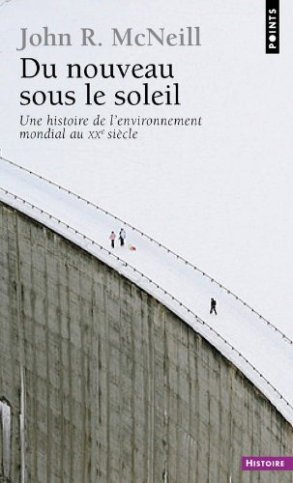











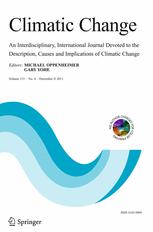
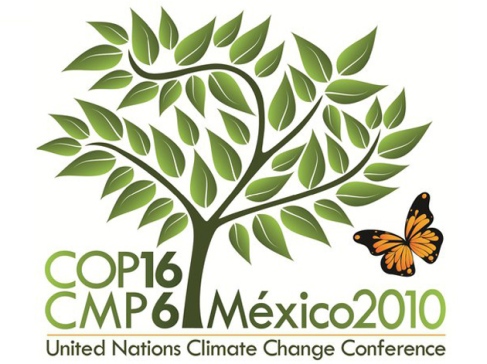



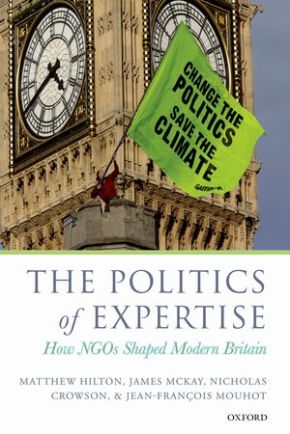



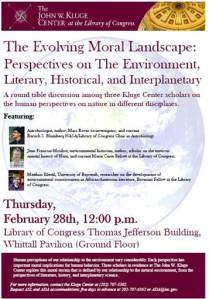


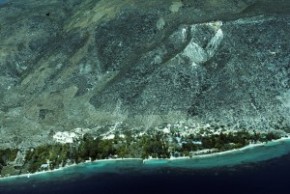






 My first book Les Réfugiés acadiens en France, 1758-1785, first published in Canada in 2009 is republished today in France by the University Presses of Rennes. The book is currently being translated in English and will be published by the University of Louisiana Press in 2013.
My first book Les Réfugiés acadiens en France, 1758-1785, first published in Canada in 2009 is republished today in France by the University Presses of Rennes. The book is currently being translated in English and will be published by the University of Louisiana Press in 2013.




